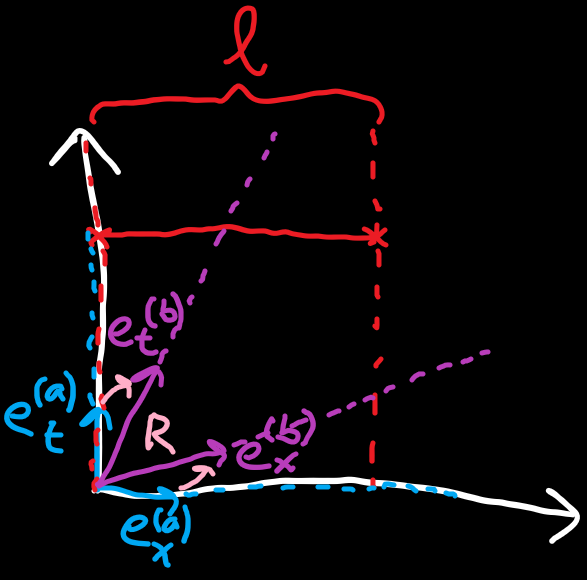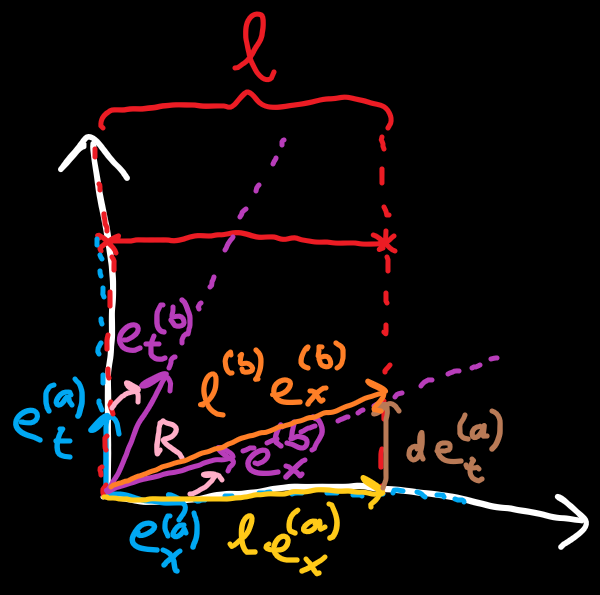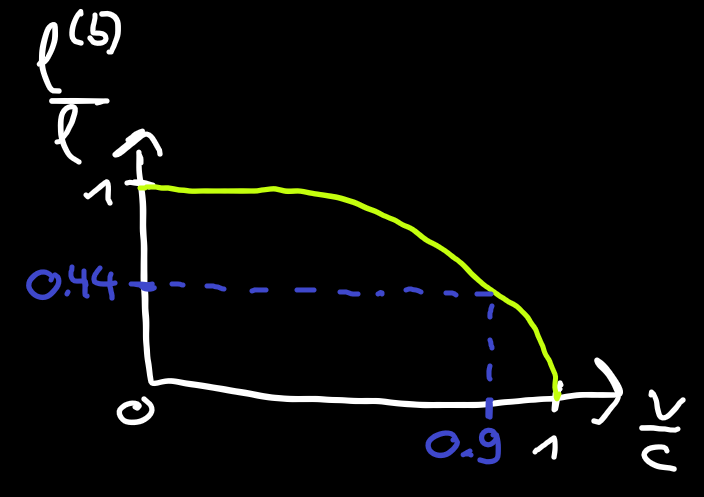Special Relativity with Geometric Algebra - Length Contraction
In the previous section we saw how clocks tick slower for observers looking at clocks that are in motion relative to them. In this section we will look at what happens to lengths for observers moving relative to them.
This section is based on Eigenchris' video "Relativity 104c: Special Relativity - Time Dilation and Length Contraction Geometry" and the length contraction part is discussed at this part. If you have trouble following the text here it is worth watching the length contraction part of the video.
Length Contraction
Imagine Alice is standing still and is looking at a fixed-length object at rest with her, for example a stick. How does Alice measure the length (the x extent) of the stick? She calculates the difference vector from the first to the second endpoint and takes the inner product with her reciprocal basis vector
Bob is moving relative to Alice. We have a passive transformation between Alice's and Bob's basis vectors using a rotor
The diagram below pictures our setup.

So both of Bob's basis vectors are a bit tilted compared to Alice's. How does Bob see the measuring stick? If we try measuring the stick's difference vector with Bob's reciprocal basis vectors, such as in the previous section, we will run into an issue:
The stick expressed in terms of Bob's basis vectors has both a time and space component, as the stick is not parallel to either of his basis vectors. In Bob's view, the endpoints of the original stick are at different times and measuring this difference vector would not make sense as we would be measuring both a distance in space as well as a distance in time.
To remedy this we need to draw a line in Bob's frame along which events occur at the same moment in time. For that we notice that all events on lines parallel to Bob's spatial basis vector

The orange vector in the drawing is a line of simultaneity because it is parallel to Bob's
We then observe that the yellow vector with known
We can express Bob's spatial basis vector in terms of Alice's basis vector using the rotor
Putting together
If we now only look at the spatial
Let's solve this for the ratio between Bob's and Alice's lengths
Because the hyperbolic cosine function is always greater or equal to
A observer sees lengths in relative motion shorter than lengths at rest. This is called length contraction. Let's substitute
Evaluating this for

The ratio starts at
Gamma factor
To relate with the ordinary formalism, we can also write our results in terms of the gamma factor again:
Conclusion
We looked at a length in a rest frame and at how the length is seen by an observer moving relative to it. We noticed for length measurements it is important to measure both endpoints at the same time in the measurer's frame. The length ratio we arrived at varies between
Formulas
- Lines of simultaneity:
- Length contraction for observer moving with relative velocity
Up next
Next we will look at how a moving observer sees an electric field in electromagnetics.